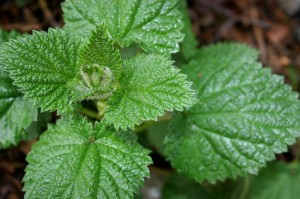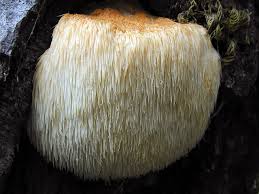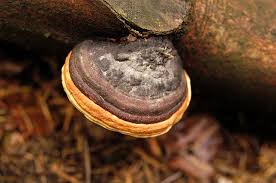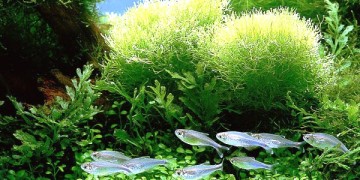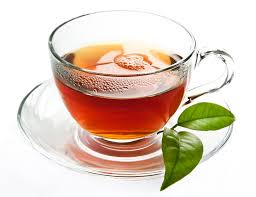Sara Thyr, ND
Every knows that along with all of the fun and celebration of the holiday season, we are also often fraught with colds and flus. I have a few simple and important tools to help you stay healthy this winter.
Don’t let the sugar demon fool you.
Don’t just have some cookies, candy, pie or cake “just because it is the holidays.” Sugar depresses your immune system for at least 4 hours after you consume it. And if you are consuming it continually, then you’re living with a sub-optimal immune system. I don’t expect anyone to be perfect, but keep in mind that sugar should be a treat, not the norm. And if it is not something you really love, don’t have it just because it is there or because others around you are eating it.
Wash those grubby mits!
Scientific evidence shows that people who wash their hands frequently have a significantly lower incidence of colds and flus during the winter. It is one of those simple things that you can do that really make a huge difference.
Wash your hands for at least 20 seconds every hour or so, before and after eating, after using the restroom, touching a pet, or being around or touching anyone who is sick.
Here are tips for the perfect hand washing:
- Wet your hands with clean, running water (warm or cold), turn off the tap, and apply soap.
- Lather your hands by rubbing them together with the soap. Lather the backs of your hands, between your fingers, and don’t forget under your nails (lots of little bacteria and germs can hide out here!).
- Scrub your hands for at least 20 seconds. Not sure how long that is? Hum Jingles Bells, Row, Row Row Your Boat or the Happy Birthday song from beginning to end twice.
- Rinse your hands well under clean, running water.
- Dry your hands using a clean towel or air dry them.
If you can’t be near a sink with running water and soap, it is reasonable to use anti-bacterial hand sanitizers or wet wipes. Neither is as good as regular old hand washing, nor as good for the environment, but better than nothing in a pinch.
Avoid antibacterial hand soaps. Triclosan is the main active ingredient in antibacterial hand sanitizers. It gets washed down your drain and into the streams and groundwater and is damaging to fish and wildlife. The Environmental Working Group calls triclosan “neither safe nor effective.” (EWG.org)
Instead choose a regular liquid or bar unscented or only natural essential oil scented soap, free of parabens and phthalates (most fragrances).
Optimize your Digestion
Absorption of nutrients is the key to good health. Everything you put in your mouth is the food for all of your cells. I like thinking about food this way – it helps to keep on track. You wouldn’t put a bag of donuts into the gas tank of your car. Think of your body similarly. It needs good fuel. And if your digestion is not functioning properly, then it is important to correct that. Experiencing symptoms like constipation, loose stools and acid reflux are all signs that you are not processing your nutrients properly. Either you are eating things that your body cannot break down well, or you perhaps are not making the digestive enzymes necessary for ideal food assimilation. Making sure that you have excellent gut flora health is also important. Often we need to take probiotics to assist this. The sad news on this is buyer beware. Many probiotics on the store shelves do not have what that say they have on the label, while more still are contaminated with other bacteria, that in a fragile environment, can do more harm than good. A probiotic with a lot of good clinical research behind it is Microbiome’s Mega Sporebiotic. We also frequently use oral lozenges that have the strain strep salivarius, which has been shown to decrease the number of colds and ENT infections if taken regularly.
Foods that can help both improve digestion as well as boost your immune system include: dark, leafy greens, whole grains, lean organic proteins (like chicken and fish) and lots and lots of cooked vegetables. Some people make a smoothie to get more vegetables in. It’s easy during the holidays to be overwhelmed with parties, activities and exposure to rich and sugary foods. Make a big pot of soup on the weekend or roast some vegetables so that you have better choices during the week.
Taking Some Nutrients Can Give You a Boost!
Vitamin D and K – I recommend that they be taken together. Vitamin D is very important and most people at this (Northern California) latitude are low. It is crucial for immune function, as well as a host of other things like mood, bone health, heart health and skin. While most people are low, it is a fat soluble nutrient so if you haven’t had it checked lately, do that before you start a regimen. Vitamin K helps it be better absorbed, and adds to the bone and heart protection.
Vitamin A and Beta Carotene
These are splendid immune boosting nutrients. Vitamin A not only boosts your own immune system but also has antiviral activity. It can cause birth defects if taking over 5000IU during pregnancy. So if you are pregnant or could become pregnant, stick to the low dose or Beta Carotene, which cannot convert to the teratogenic version, but still has great health benefits. One fantastic source for Beta Carotene is Spirulina. Take this daily or add to your smoothies for a great boost.
If it’s safe for you to take Vitamin A, 10,000IU/day is a good dosage. Take it with food since it is fat soluble, so it will be better absorbed. Also – since it is fat soluble, it can accumulate and cause toxicity, so be sure to take some breaks. I suggest not taking it every day, or take a couple of weeks off after you have taken if for a month.
Tried and True Vitamin C
Vitamin C is an essential nutrient, which means our bodies need it and cannot make it themselves. So we have to consume it. Luckily it is found in a number of fruits and vegetables, so most of us in this country are lucky enough to not be deficient. So does it makes sense to take more? I love vitamin C – it is an excellent antioxidant, it can help with skin and tissue integrity (fewer wrinkles!), and supports our immune system function. One recent study showed that taking vitamin C daily can decrease the number of colds in active people (but did nothing for the rest of the population). Other research shows that taking vitamin C during a cold can decrease the duration, but only at dosages of 6-8 grams (that is 6000-8000mg – that is enough to cause diarrhea in some people!). Taking 3-4 grams/day did not seem to decrease the duration of the cold. If you are going to take high dose vitamin C, be sure to get a buffered C, which should reduce the digestive side effects. Of course, discontinue it if you are experiencing severe digestive difficulties.
Fish Oil
Omega 3 fatty acids, found in high dosages in certain cold water fish, have long been known to be another essential nutrient. The omega 6’s and 9’s we tend to get more of in our diet. They are more common in vegetables and grains, and meat contains omega 9s. It is the omega 3 fatty acids that convey the most health benefits, and are more rare in our diets. Of course, you can get them in foods, but I don’t know many people who want to have sardines for lunch every day. (But if you like them, it is a fantastic source, and also contains some calcium, so they are a very nutritious food!) Even the healthiest of people can use a boost of their omega 3 fatty acids. Taking a high quality fish oil is one of the most common recommendations I make, and especially in the winter. Fish oil has myriad health benefits, including boosting mood, protecting your heart, providing good levels of the beneficial HDL cholesterol as well as excellent immune support. Omega-3 fatty acids, DHA and EPA, also help the good flora of one’s digestive tract maintain gut health. Research shows the omega 3 fatty acids with along with the gut microbiota help to maintain intestinal wall integrity, which in turn also supports immune system function.
Essential Oils
While I was researching fish oils above, I came across this article that I know some of you would really appreciate. There are good immune supportive effects of many essential oils, in particular eucalyptus and ginger.
The common cold is incredibly abundant this time of year. Try to maintain your own good health and that of your family by instituting some healthy practices and high quality supplements.

